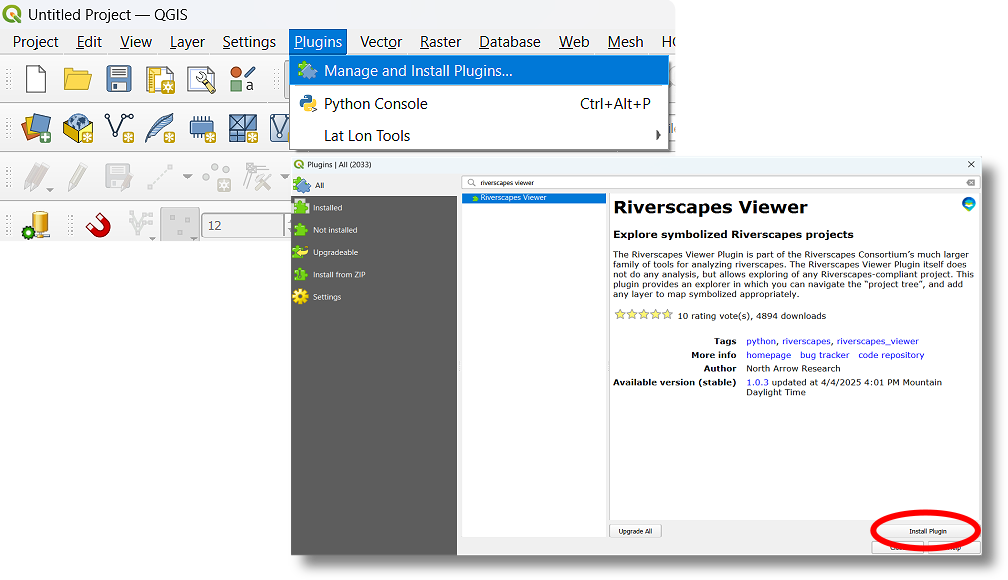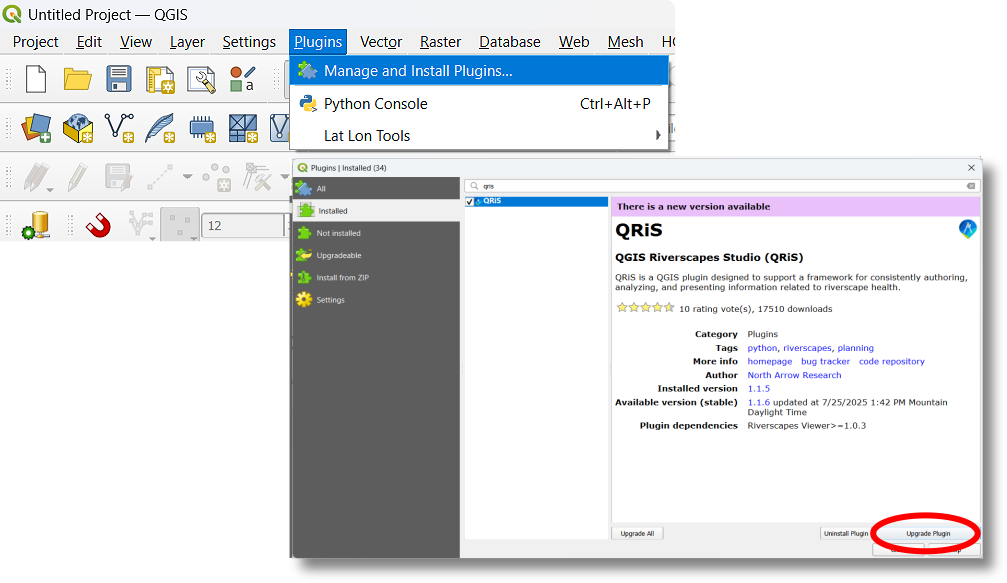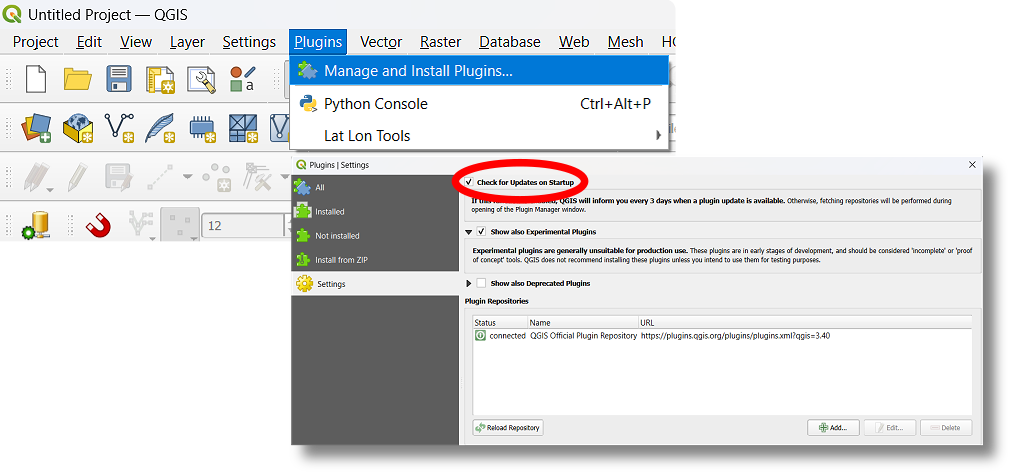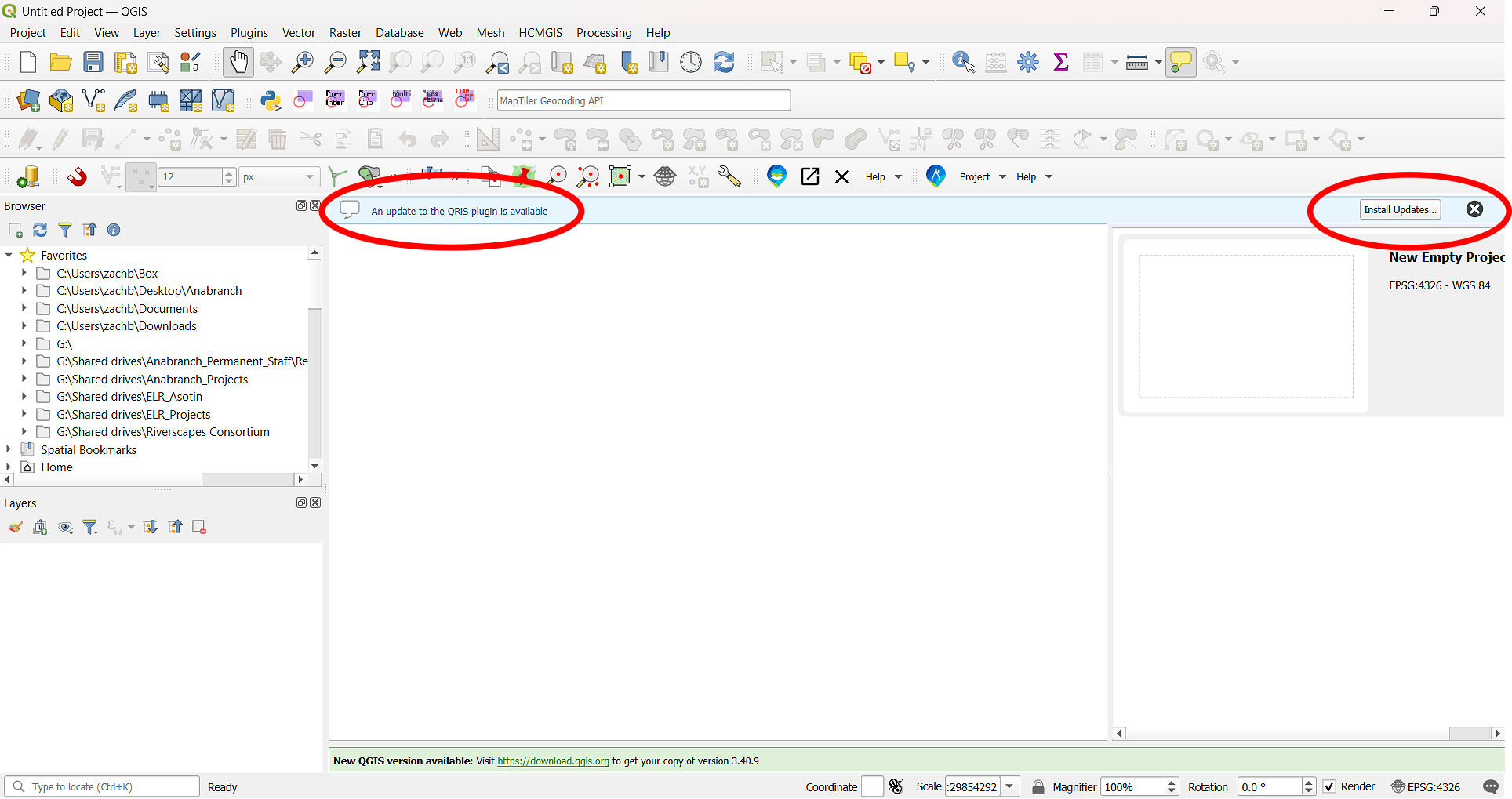Install
To install QRiS, you'll first need to set up QGIS, a free and open-source Geographic Information Systems (GIS) software. QRiS functions as a QGIS Plugin, meaning it relies on QGIS to run.
QGIS Installation
There are lots of resources on QGIS if you are new to GIS or QGIS. We have some Knowledge Base articles and tutorials available here to help you get started.
QGIS is compatible with a variety of operating systems, including Windows, macOS, Linux, and Android. When choosing a QGIS version, you'll see two main types: Experimental (latest) Releases and Long Term Releases (LTR). LTR versions are generally more stable, while Experimental Releases offer the latest features.
QRiS is designed to work with version 3.32 or later, and has been tested most extensively with 3.34.9. All previous releases of QGIS can be found here). If a specific QGIS version is required for a particular QRiS release, this information will be provided in the release notes or as a pop-up within the QGIS Plugin Manager. Some users and developers have noticed issues with symbology and exports using 3.42, so if you encounter problems, consider downgrading to 3.32 or 3.36. Note that you can have multiple versions of QGIS installed on your computer.
How to Install QRiS
QRiS can be installed from the QGIS Plugin Manager. However, you must have the latest version of Riverscapes Viewer installed before installing QRiS. To install QRiS, follow these steps:
-
First, verify installation or install the Riverscapes Viewer Plugin:
-
In the QGIS menubar (top of page), go to
Plugins > Manage and Install Plugins. -
Search for Riverscapes Viewer and click the Install button (should take less than 30 seconds). This is a required dependency for QRiS.
-

-
Then, install QRiS:
-
Go to the same
Plugins > Manage and Install Pluginsand search for QRiS. -
Click the Install button (should take less than 30 seconds).
-

Updating QRiS
You can update QRiS at any time after installation through the QGIS Plugin Manager. Here's how:
-
Go to
Plugins > Manage and Install Plugins. -
Select QRiS from the list of installed plugins.
-
Click the Update button.

For automatic updates, you can configure the Plugin Manager settings to Check for Updates on Startup. When enabled:
-
QGIS will notify you periodically (every 3 days) upon startup if any installed plugin, including QRiS, has an available update.
-
To apply the update, simply click the Update button that appears on the blue taskbar in the map panel.
Tip: To ensure you always have the latest features and improvements, regularly check for updates to QRiS and its dependencies. At the same time you update QRiS, it is a good idea to also update resources in the Riverscapes Viewer. This is where updates to symblogogy and updates to the Protocol Library.


Installing Older Versions of QRiS
QGIS is constantly issuing new releases. We attempt to make QRiS forward compatible, but occasionally there are bugs that emerge from our QGIS dependencies in newer releases. If you need to install an older version of QRiS, you can do so by downloading the specific version from the QRiS GitHub Releases page.
For troubleshooting, you can have multiple instances of QGIS installed on your computer and they will all attempt to load the QRiS plugin (and other plugins) across the multiple versions. Moreover, if you uninstall one of the versions of QGIS, you will notice your plugins still appear in the other versions of QGIS.

Once the version is dowloaded locally onto your device, you can install the plugin in QGIS by going to Plugins > Manage and Install Plugins > Install from ZIP and selecting the ZIP file.
